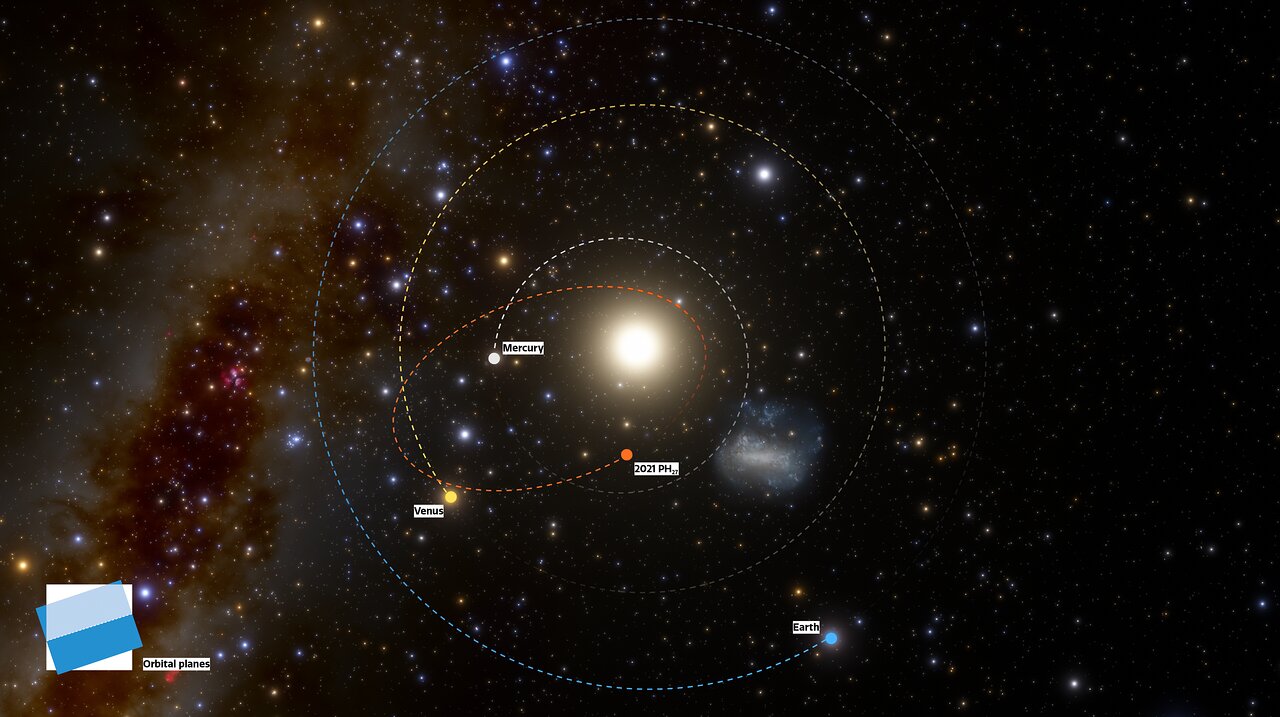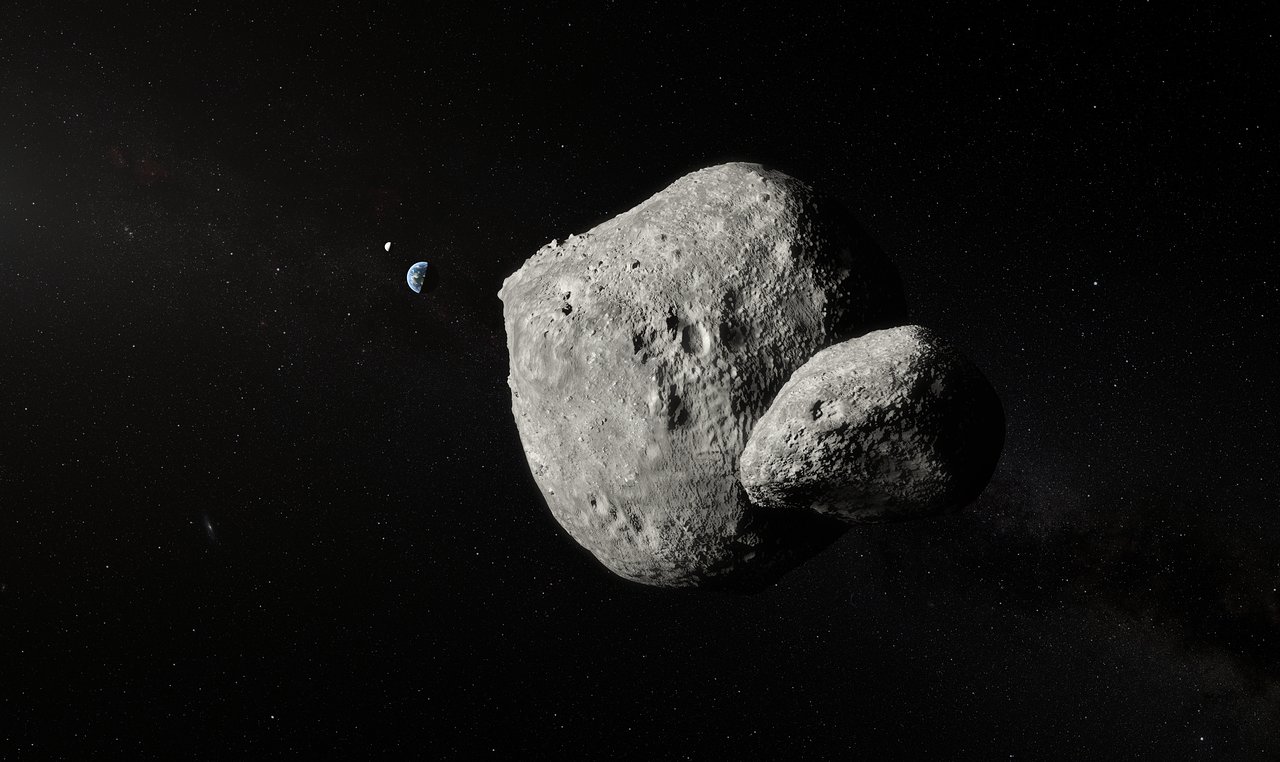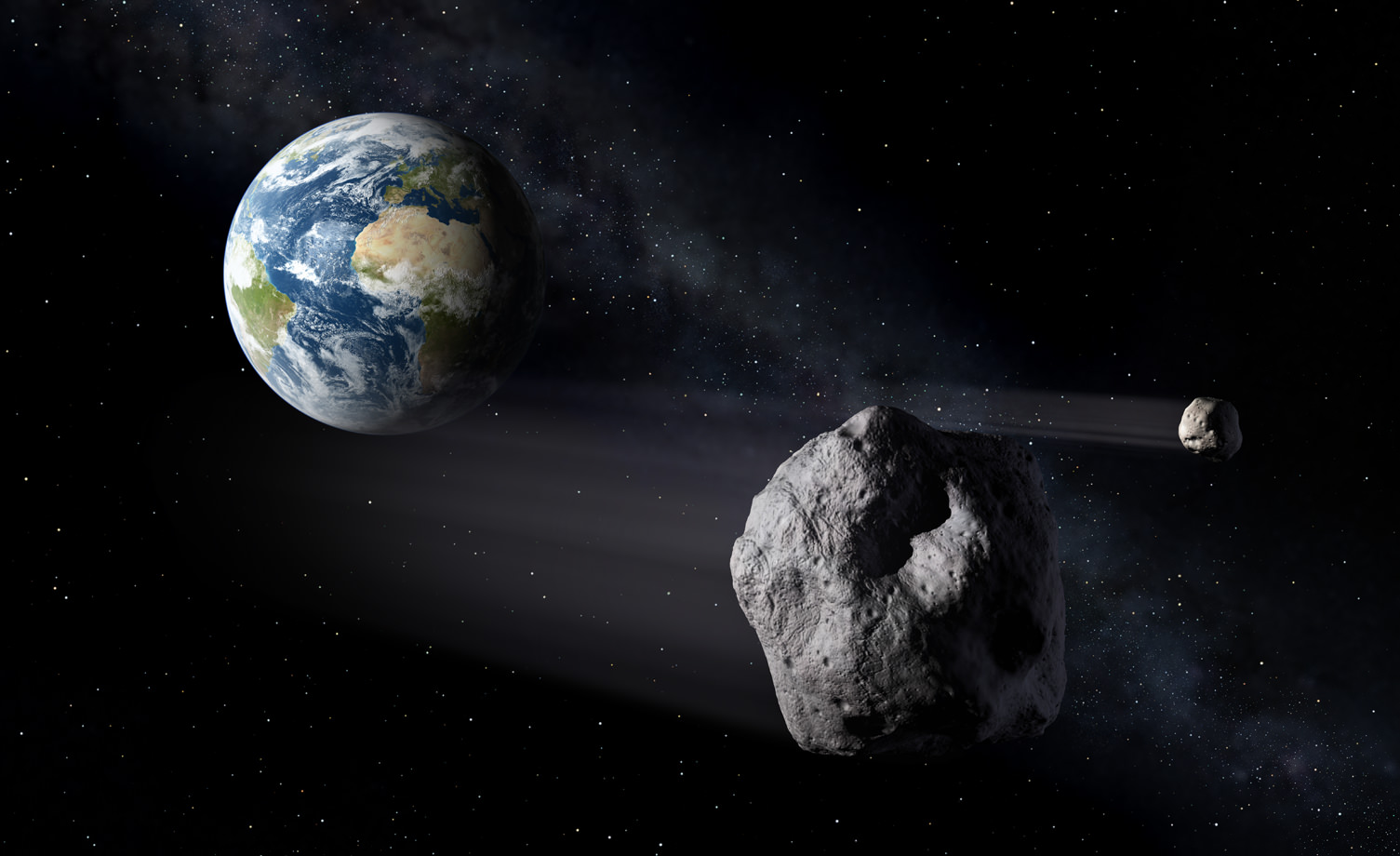For a little over a month now, the Earth has been joined by a new ‘mini-moon.’ The object is an asteroid that has been temporarily accompanying Earth on its journey around the Sun. By 25th November it will have departed but before then, astronomers across the world have been turning their telescopes to study it. A new paper of 2024 PT5 reveals its basaltic nature – similar to volcanic rocks on Earth – with a composition that makes it similar to lunar material. There have been many close encounters to Earth allowing many of its secrets to be unveiled.
Continue reading “Here’s What We Know About Earth’s Temporary Mini-Moon”Earth Will Have a Tiny New Mini-Moon for a Few Months
The Moon has inspired poets and artists, musicians and playwrights. The sight of our one and only Moon is familiar to anyone that has ever glanced up at the night time (and sometimes day time sky!) Every so often though, our Moon (note the use of capital ‘M’)is joined by a small asteroid that wanders too close. Astronomers have detected an 11-metre wide asteroid that has the snappy name 2024 PT5 and it came within 567,000 kilometres of Earth and will become a temporary satellite from 29 September until 25 November when it will leave our system.
Continue reading “Earth Will Have a Tiny New Mini-Moon for a Few Months”Amateur Astronomer Finds Additional Asteroids With Remote Telescopes
Three amazing recent asteroid finds show what’s possible in terms of astronomy online.
Practical astronomy is increasingly becoming an online affair. In 2023 we wrote about this trend, and highlighted how Russian observer and amateur astronomer Filipp Romanov used time on remote observatory networks to successfully discover two asteroids, which he named 623826 Alekseyvarkin and 623827 Nikandrilyich after his great-grandfathers. Now, Filipp has repeated this feat and pushed the limit of what’s possible online with the discovery of a trio of asteroids, including a rare near-Earth asteroid discovery found using a remote system.
Continue reading “Amateur Astronomer Finds Additional Asteroids With Remote Telescopes”An Asteroid Found Sharing the Orbit of Mars
Astronomers discovered another asteroid sharing Mars’ orbit. These types of asteroids are called trojans, and they orbit in two clumps, one ahead of and one behind the planet. But the origins of the Mars trojans are unclear.
Can this new discovery help explain where they came from?
Continue reading “An Asteroid Found Sharing the Orbit of Mars”Fragments From That Asteroid That Exploded Above Berlin Have Been Recovered and They're Really Special
On January 21st, 2024, a meter-sized asteroid (2024 BX1) entered Earth’s atmosphere and exploded over Berlin at 12:33 am UTC (07:45 pm EST; 04:33 pm PST). Before it reached Earth, 2024 BX1 was a Near-Earth Asteroid (NEA) with an orbit that suggests it was part of the Apollo group. The fragments have since been located by a team of scientists from the Freie Universität Berlin, the Museum für Naturkunde (MfN), the German Aerospace Center (DLR), the Technische Universität Berlin, and the SETI Institute and identified as a rare type of asteroid known as “aubrites.”
Continue reading “Fragments From That Asteroid That Exploded Above Berlin Have Been Recovered and They're Really Special”Asteroid Ryugu Contained Bonus Comet Particles

On December 5th, 2020, Japan’s Hayabusa2 mission successfully returned samples it had collected from the Near-Earth Asteroid (NEA) 162173 Ryugu home. Since asteroids are basically leftover material from the formation of the Solar System, analysis of these samples will provide insight into what conditions were like back then. In particular, scientists are interested in determining how organic molecules were delivered throughout the Solar System shortly after its formation (ca. 4.6 billion years ago), possibly offering clues as to how (and where) life emerged.
The samples have already provided a wealth of information, including more than 20 amino acids, vitamin B3 (niacine), and interstellar dust. According to a recent study by a team of Earth scientists from Tohoku University, the Ryugu samples also showed evidence of micrometeoroid impacts that left patches of melted glass and minerals. According to their findings, these micrometeoroids likely came from other comets and contained carbonaceous materials similar to primitive organic matter typically found in ancient cometary dust.
Continue reading “Asteroid Ryugu Contained Bonus Comet Particles”OSIRIS-REx Returns This Sunday!

On September 8th, 2016, NASA’s OSIRIS-REx (Origins, Spectral Interpretation, Resource Identification, Security, Regolith Explorer) mission launched from Earth. Its primary mission was to rendezvous with the asteroid Bennu, a carbonaceous Near-Earth Asteroid (NEA), obtain samples from its surface, and return them to Earth for analysis. On December 3rd, 2018, the mission reached Bennu and spent the next two years searching for the optimal place to retrieve these samples. Tomorrow, on Sunday, September 24th, the mission will finally deliver these samples to Earth for analysis.
Last week, on Saturday, September 16th, the OSIRIS-REx mission was spotted by the ESA’s Optical Ground Station (OGS) 1-meter telescope on the island of Tenerife, Spain. The spacecraft was still 4.66 km million (2.9 million mi) from Earth, but well on its way to returning. This will be the last time OSIRIS-REx will be spotted by ground-based telescopes before it reaches Earth to deliver its sample and heads back out into space.
Continue reading “OSIRIS-REx Returns This Sunday!”An Asteroid has Been Discovered That Crosses Mercury’s Orbit

Astronomers have spotted the fastest-ever asteroid orbiting Sun — and at times, it gets closer to the Sun than the planet Mercury.
Continue reading “An Asteroid has Been Discovered That Crosses Mercury’s Orbit”The Japanese asteroid-hunter had another photo opportunity when it dropped a target marker on asteroid Ryugu
The Japanese Aerospace Exploration Agency‘s (JAXA) has made some impressive feats in recent years. Roughly one year ago, and following in the footsteps of its predecessor, their Hayabusa2 spacecraft successfully rendezvoused with a Near-Earth Asteroid (NEA) – 162173 Ryugu. Since then, it has been collecting samples from the surface in the hopes of learning more about the formation and evolution of the Solar System.
Just a few months after the spacecraft created an artificial crater with an anti-tank warhead, the spacecraft has once again descended close to the asteroid to drop another target marker. This maker, a reflective sphere that contains the names of people who’ve supported the mission, will provide a visual guide as the spacecraft attempts to collect its second sample of material from the asteroid’s surface.
Continue reading “The Japanese asteroid-hunter had another photo opportunity when it dropped a target marker on asteroid Ryugu”A double asteroid came uncomfortably close this weekend. Here’s what astronomers saw

On May 25th, 2019, a strange, double-asteroid (1999 KW4) flew past Earth at a distance and speed that is likely to make a lot of people nervous. As always, there was no danger, since the asteroid passed Earth at a minimum distance of 5.2 million km (3.23 million mi), over 15 times greater than the distance between Earth of the Moon, and its orbit is well-understood by scientists.
Because of this, flyby was the perfect opportunity for the International Asteroid Warning Network (IAWN) to conduct a cross-organizational observing campaign of the asteroid 1999 KW4 as it flew by Earth. The European Southern Observatory (ESO) took part in this campaign and managed to capture some images of the object using the Very Large Telescope (VLT).
Continue reading “A double asteroid came uncomfortably close this weekend. Here’s what astronomers saw”





